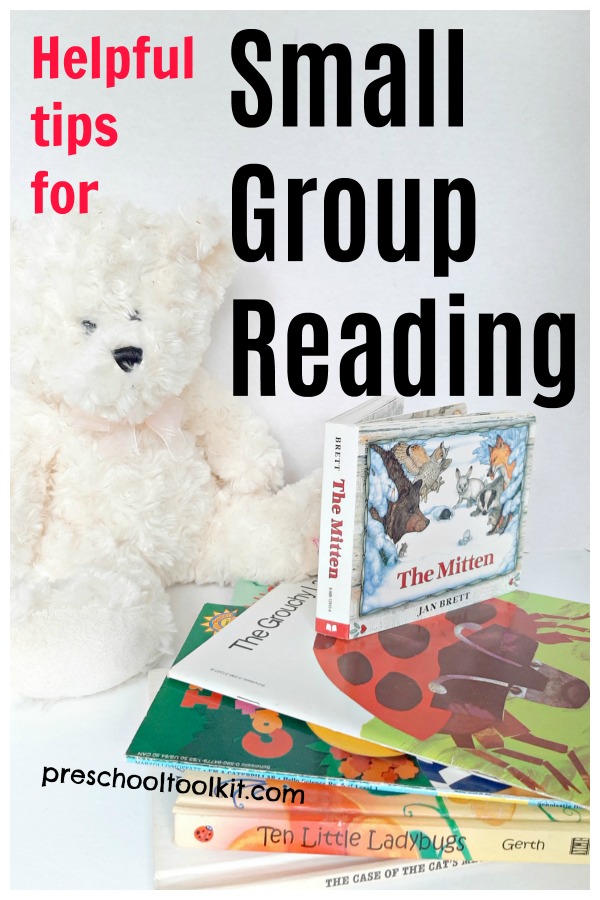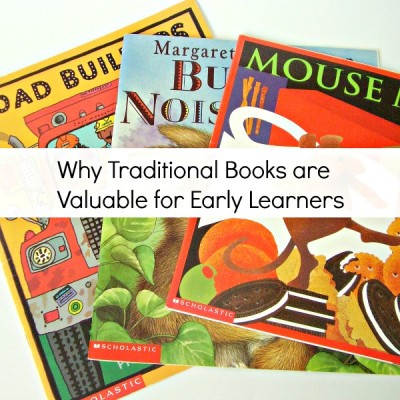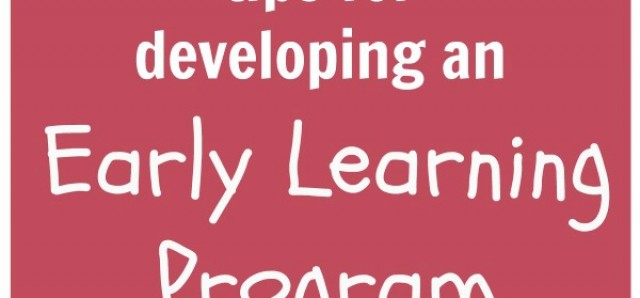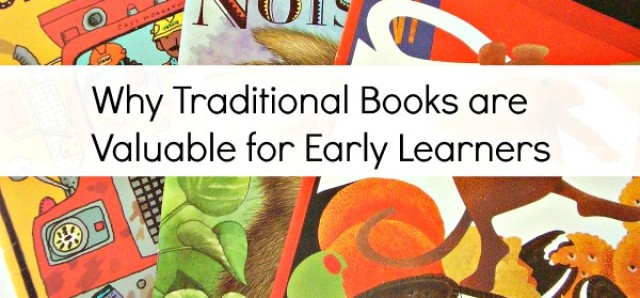Guide to Small Group Reading with Preschoolers
Small group reading is a valuable part of an early learning program. Story time with a small group supports language development and social interaction, as children explore and share experiences together.

Privacy and Disclosure
for information on cookies and affiliates
Can you read this book to me?
It's wonderful to hear these words from your child. They indicate a love of books and the adventures that await through reading.
Language development is an important part of early childhood. As children learn new sounds, new words, and their meanings, they are able to express themselves and communicate more effectively.
Children become verbal in stages: from repeating rhymes and making three word sentences or phrases as toddlers, to asking questions and telling stories as preschoolers.
While it is always desirable to have books available for children to access individually, a scheduled story time with a small group of children adds value and enjoyment to your language activities.
Story time is a beneficial way to support language development and instill a love of reading, while introducing your early learner to a wide variety of topics.
Benefits of small group reading
Reading with a small group of children is a bit different than addressing a large group.
- Large group readings benefit from large gestures or gross motor movements from the story teller, along with props and big voices that further illustrate the story. Readings may be done with or without images being shared, or images may be displayed on a screen or poster board.
Related: Story Time Options Without Opening a Book
- Small group settings offer a cozy environment that supports individual responses and effectively highlights images in the book. Children who are easily distracted in large groups may benefit from readings with just a few children at a time.
Shared reading provides opportunities for kids to listen, interact, comment, and collaborate.
Here are a few benefits that can be realized from story time with a small group.
1. Reading as a group helps to develop language and cognitive skills as kids share experiences with others.
As a result of group participation, children are given an opportunity to recognize and appreciate different responses and opinions from others.
"Did anyone ever build a snowman like that?"
"Why did the snowman melt?"
"Do you think they will build another snowman"?
2. Small group reading enhances the daily schedule with a routine activity.
Children and teachers gather together comfortably in a specific area with everyone's attention focused on one activity. It is generally understood that quiet voices are to be used unless a story requires more energetic reading. The group reading also requires taking turns and listening to each other.
This can be a calming, settling routine that is beneficial throughout the school day.
3. Small group reading encourages interaction between teacher and students.
There is more opportunity for response from participants when the number of listeners is small. Time can be allowed for participants to engage individually with the reading.
There is also more opportunity for images to be shared and explored.
Encourage and demonstrate engagement with the story: make comments; ask questions; predict outcomes.
4. Reading as a scheduled small group activity is often effective as a transition from one activity to another.
With attention focused, the teacher or parent is able to guide children into another play activity or prepare for nap time or snack time after the reading.
Recommended reading for preschoolers
Guidelines for successful small group readings
Reading experiences with a group of children will vary depending on factors such as:
- number of participants
- space or environment where the reading takes place
- time allotted for the reading
The length of the reading time will vary according to factors such as the age and attention span of children, the topic of the book, and even the mood of the day.
Ten to fifteen minutes is a general guideline for reading and discussing a story. Often a reading can be extended or enhanced with gestures or voice fluctuations that add to the overall understanding or comprehension of a reading.
Here are a few tips for conducting a small group reading.
- Seat children comfortably in a carpeted area or on individual mats or cushions.
- The teacher may sit on a low stool to facilitate holding the book at a level where it is seen by all. The book may be supported on an easel to allow the teacher to be hands-free
- Minimize distractions such as toys or materials in the circle unless they are adding to the story (i.e. puppets). In some cases, consider having a child hold a fidget toy or even a favorite doll or stuffy to help him or her relax and focus during the reading.
- Choose books with large, colorful illustrations. Point out the title, author, and illustrator before you begin reading.
- Bring the characters to life - or highlight the action or the mood of the story - using voice fluctuations, facial features and hand gestures.
- Make eye contact with the children, pausing often to allow them - and you! - to make comments or ask questions.
Options for small group reading
1. Shared Reading Program
One of the programs I initiated with my preschool was a shared reading program with a local elementary school. We were seated in the library at the school, where each of the preschoolers in my class was matched with a reading buddy from a grade two classroom.
As the older children began to read to the younger ones, I was pleased with the relative quiet that followed, with only gentle murmurs heard throughout the room.
This program benefited early readers of all ages.
2. Alternative Methods of Telling Stories
Compliment small group story times with other methods of story telling. These extensions of the traditional book can include puppet shows, charades, or other means of communicating a story.
These alternatives are beneficial for young children who often cannot be expected to sit for long periods, and to provide a variety of language and communication experiences.
Props can also be a distraction so these options will vary from one experience to another.
Conclusion
Reading as a small group can be a special part of your day at home or in the classroom. It offers unique experiences for learning and enjoyment.
Time spent reading together supports language development, childhood literacy, and a growing love of books and story telling.
Take advantage of the opportunity to share stories as a group for overall childhood development.
Benefits of Traditional Books
Literacy Activities on Pinterest







